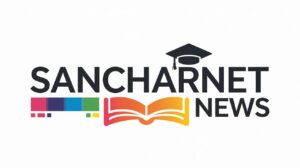Student Loan Changed by May 5, 2025: Millions of federal student loan borrowers are facing a major shift starting May 5, 2025, as the Department of Education (DOE) resumes debt collection efforts on defaulted loans. This significant move ends the yearslong pandemic-related pause and marks the return of wage garnishments, tax refund seizures, and more aggressive collection methods.
This student loan modification may have an immediate effect on your financial future if you currently owe money on any federal student loans. This is a thorough explanation of what’s going on, who is impacted, and how to stay safe.
What Is Happening With Student Loan Changed by May 5, 2025?
Starting May 5, the Treasury Offset Program will be reinstated. Under this program, the federal government can withhold tax refunds, Social Security benefits, and other federal payments to recover unpaid student loans.
In addition, administrative wage garnishment—seizing part of your paycheck—will resume later this summer, following advance notice to borrowers. This move signals the end of protections that were put in place at the onset of the COVID-19 pandemic, a time when millions of borrowers were shielded from aggressive collection tactics.
How Many Borrowers Are at Risk?
According to recent reports:
- 5.3 million federal student loan borrowers are currently in default (no payment for over 270 days).
- 4 million borrowers are in late-stage delinquency (behind on payments but not yet in default).
This means nearly 10 million Americans could soon face debt collection actions like wage garnishment, tax refund withholding, or even litigation. If you’re behind on your federal student loans, you must act immediately to avoid harsh penalties.
Canada Carbon Rebate Program 2025 for Small Businesses: Who is Eligible & How much you can receive?
$967 Social Security Direct Payment Goes Out in 5 Days: Full Details and Eligibility
Why This Matters?
The resumption of collections could financially destabilize millions, particularly those already struggling with rising living costs and inflation.
- Federal benefits such as Social Security and veterans’ benefits could be intercepted.
- Tax refunds (a financial lifeline for many families) could be seized.
- Wage garnishment can reduce take-home pay, making it harder to cover everyday expenses.
This shift could trigger widespread financial hardship if borrowers are unprepared.
What Borrowers Need to Know Right Now?
Here’s a closer look at the key points affecting you:
Treasury Offset Program Resumes
The government can now seize your tax refunds and other federal payments without a court order to cover your defaulted loans.
Administrative Wage Garnishment
The DOE will start issuing notices about wage garnishment later this summer. After a 30-day notice period, they can directly deduct up to 15% of your disposable income from your paycheck.
Default vs. Delinquency
- Delinquent loans: Missed one or more payments but less than 270 days overdue.
- Defaulted loans: No payments for 270 days or longer. Immediate action required to avoid collection.
How to Avoid Wage Garnishment and Collection Actions?
Here are your best options to avoid severe consequences:
Loan Rehabilitation
- Make nine consecutive, on-time, monthly payments based on your income.
- Successfully completing rehabilitation removes the default status from your credit history.
Loan Consolidation
- Accept an income-driven repayment plan and consolidate your defaulted loan into a new loan.
- This process is faster but may not remove the original default from your credit report.
Income-Driven Repayment Plans (IDR)
- The DOE is expected to resume processing IDR applications in May 2025.
- Plans like Income-Based Repayment (IBR) and Pay As You Earn (PAYE) can reduce monthly payments based on your income.
$1622 Social Security Payments Coming in April 2025: Who Qualifies and What to Expect?
$3267 WIS Payment 2025 Singapore: Who’s Eligible and When Will You Get It?
Latest Statements and Administration Updates
Education Secretary Linda McMahon said in a recent announcement:
“Irresponsible student loan policies will no longer require American taxpayers to act as collateral. “
The DOE emphasized that broad student loan forgiveness is not on the table anymore. Instead, the focus is on “commonsense and fairness”, ensuring borrowers fulfill their repayment obligations.
Financial experts warn that this new approach could be a wake-up call for millions who have relied on pandemic-era leniency.
Alex Beene, a financial literacy instructor at the University of Tennessee at Martin, stated:
“To make the repayment process easier, numerous forgiveness and payment plans have been offered in recent years. However, a new administration brings a new reality.”
What Happens Next for Borrowers?
If you are in default, you can expect the following timeline:
- Next 2 weeks: Notices sent via email about your default status and options.
- Summer 2025: Garnishment notices issued after 30-day warnings.
- Late 2025: Actual garnishments and offsets begin if no action is taken.
Borrowers must start making repayment plans immediately to avoid serious consequences.
Conclusion
For millions of borrowers, the start of federal student loan collections on May 5, 2025, represents a significant turning point. If you’re behind on your payments, you must act immediately to avoid harsh financial consequences like wage garnishment or tax refund seizures.
The era of pandemic protections has ended, and the Department of Education is enforcing strict repayment policies to ensure fiscal responsibility. While this may feel overwhelming, options like loan rehabilitation, consolidation, and income-driven repayment plans are still available to help you get back on track.
FAQs About the May 5 Student Loan Changes
Who is affected by the May 5 student loan change?
Anyone with federal student loans in default (270+ days without payment) could face tax refund seizures, wage garnishment, or benefit offsets.
What is the Treasury Offset Program?
It’s a government program that automatically redirects federal payments (like tax refunds) to repay defaulted debts.
Can I avoid wage garnishment if I act now?
Yes! You can enter a loan rehabilitation or apply for an income-driven repayment plan to avoid garnishment, but you must act before the garnishment notice is finalized.
Will there be any new forgiveness programs?
No. The current administration has explicitly stated that mass student loan forgiveness will not occur.







